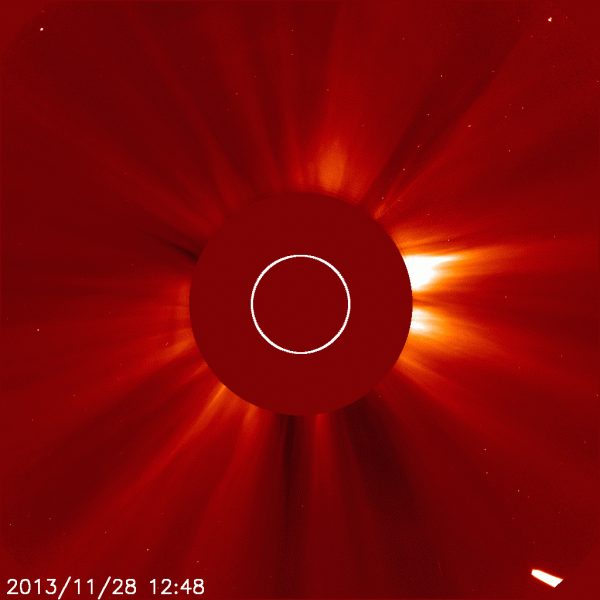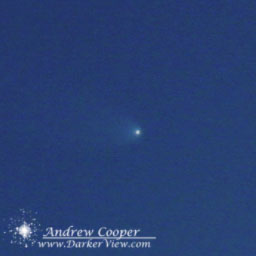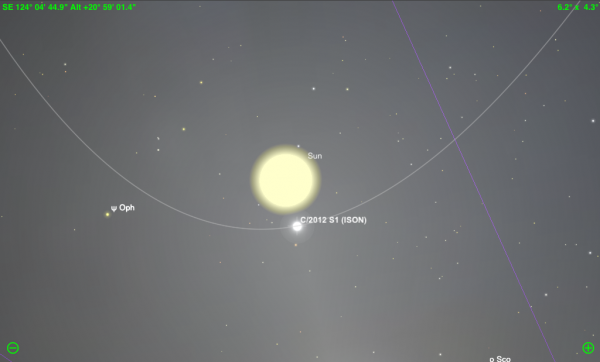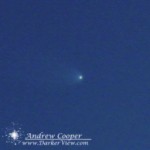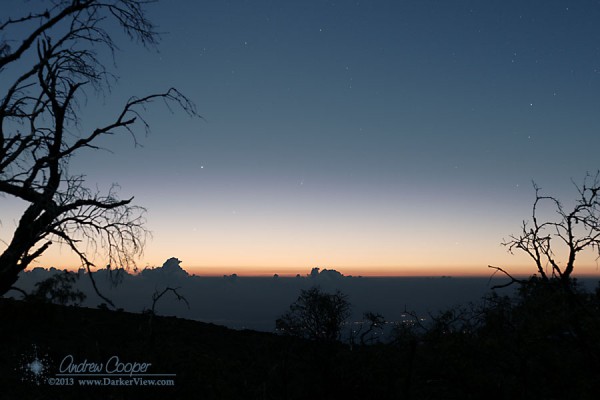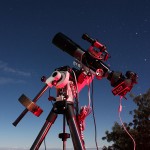Like many I was watching as comet ISON passed through perihelion. A better show than many other holiday offerings. It is clear that the comet has failed to survive perihelion passage. Disrupted by tidal forces and the extreme solar heating, the comet appears to have come apart even before closest approach.
I have assembled a better resolution animation of the demise of ISON from SOHO LASCO C2 imagery. Fifty frames at the full 1k x 1k resolution of the camera that shows the event from entry to exit from the field of view. Click on the image below for the full resolution version.
Note the lack of a distinct coma, simply a smeared out debris cloud. A cloud of debris and fragments continues along the original orbit. How large are some of these fragments? This is a question that may have to wait for a few days, allowing observations from a larger telescope further from the Sun.
Best laid plans? Not much hope remains for dawn photos as the comet emerges from the Sun’s glare. There remains comet C/2013 R1 Lovejoy in the morning sky, perhaps another photo session?
